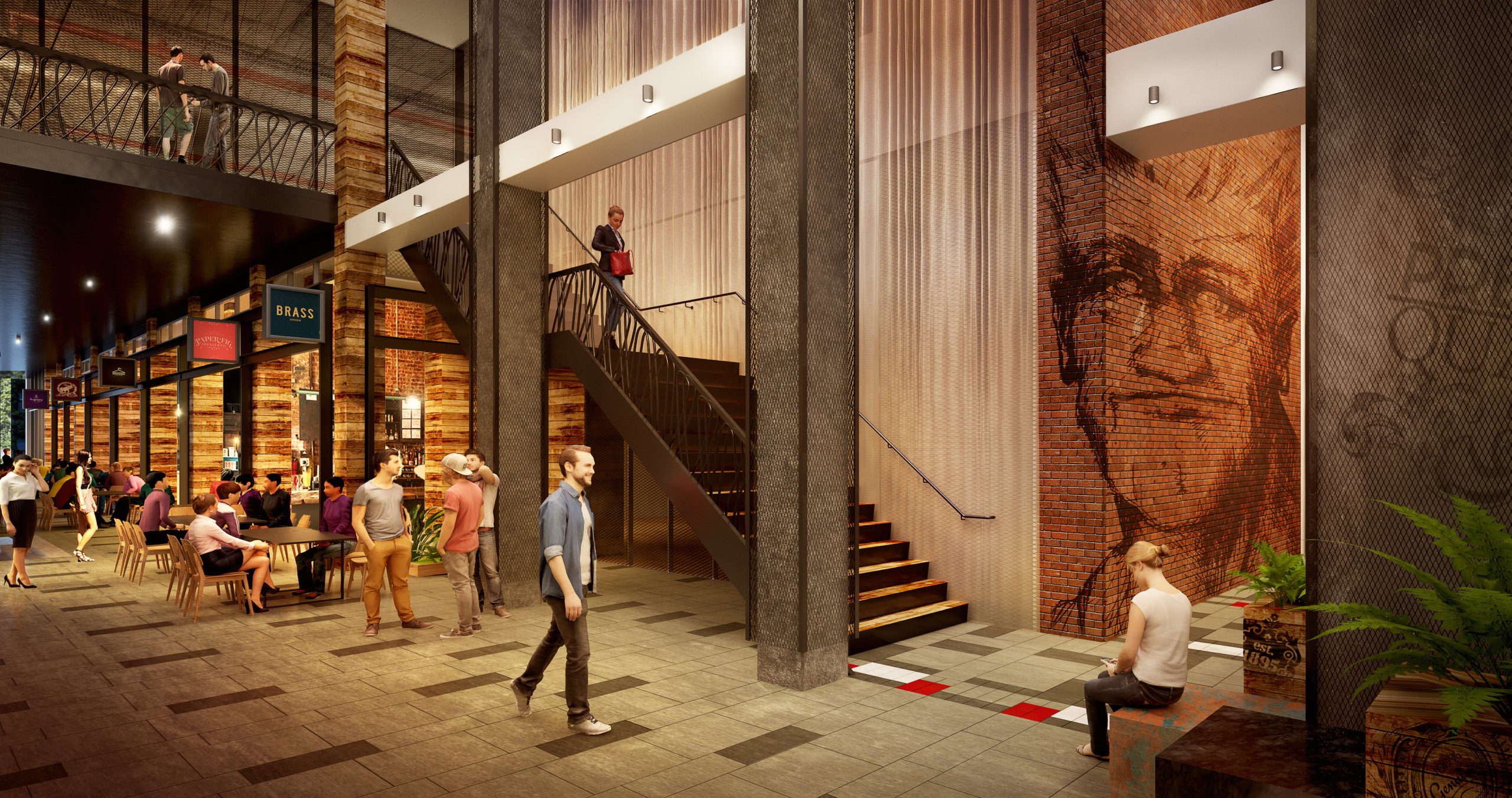Engineering COVID Confidence

-By Joshua Falco, Senior Structural Engineer
“Confidence is contagious. So is lack of confidence.”– Vince Lombardi
2021 is going to be about confidence.
Confidence in vaccines. Confidence in public health. Confidence to return to a more normal way of living and working.
As engineers working with major retail, industrial, commercial and office clients, for us confidence is about how we can create environments that give employees and customers a sense of safety and security as they return to offices, major retail centres, cities open up, and travel becomes an option.
Without confidence, there is a real risk that worrying trends in commercial occupancy will continue and our cities and their infrastructure become unfortunate casualties of the global pandemic. In Brisbane, Property Council data shows the CBD is at 63 per cent occupancy. Before COVID it was 87 per cent[1], a 24 per cent fall that has knock-on implications for the commercial ecosystem, from coffee shops to retail outlet, to public transport and so on.
Occupancy may never go back to the levels it has, retail and commercial space may change footprint forever, but the reality is that there will always be a need for offices and work environments where people can meet, progress ideas, create a company culture and satisfy the requirements of customers. For hospitality and destination environments, confidence has to be instilled in users that they are visiting a safe location.
Therefore, part of our role is to provide confidence through a design that enables people to feel safe and secure when they return to our cities, in whatever form that may take. At Inertia we believe that this can be done through material design.
In the case of COVID-19, we know that the virus is detectable[2] on:
- Copper for up to 4hrs
- Cardboard for up to 24hrs
- Stainless Steel for up to 2 days
- Plastic for up to 3 days
We need to look at alternatives and, in my research, there is the case for the use of materials and technologies to minimise the potential risk of transfer from materials that we come into contact with every day. On future works, we will be investigating the use of materials that are cost-effective, good to work with, but above all, minimise risk and provide users with confidence.
Copper
If we think about the materials our hands come into contact with, stainless steel is the go-to for commercial and office environments. Most balustrades, handrails, door handles, doorknobs and lift buttons are made from stainless steel, but copper is an alternative that research has proven to minimise health risks.
Grand Central Station in New York had copper handrails installed over a century ago and, while they still look good, they are also playing their part in this pandemic as copper has amazing anti-bacterial properties.
Bill Keevil, a microbiology researcher at the University of Southampton in England, investigated the use of copper and various unpleasant diseases such as Leaginairres Disease, Methicillin-resistant Staphylococcus aureus (MRSA) Middle East Respiratory Syndrome (MERS) and the Swine Flu (H1N1) and contact with copper killed the pathogen within minutes.
Step-N-Pull
Does copper cost too much? Don’t like the look? Perhaps we can relook at our designs.
Personally, I hate visiting a public restroom, washing my hands (for the length of a ‘happy birthday’ of course) only to turn to open a stainless steel handled door. It appears to be a self-defeating piece of design.
A proprietary item coming out of Canada, known as Step-N-Pull, is a hands-free, germ-free alternative for when exiting the restroom. It is a latch attached to the bottom of the door so you can use your foot to open the door – so simple! However, it may require more Aussies to not walk around barefoot in offices and shopping centres – but even in Queensland, we can do that can’t we?
Other Ideas
We will continue to research materials, but other ideas we are investigating use technology to overcome the need to interact with surfaces or for the surfaces to take care of themselves.
Self-cleaning Materials
Self-cleaning glass has been around for a while, but can it be adapted to take the technology across more materials with enough efficacy to suppress or prevent the spread of viruses? We think we should watch this space because it may not be too far away.
Universal Tech
Virtually everybody has a mobile phone – can we make our phone the keys to our offices, retail environments and workspaces? Such as the use of near-field communications to open doors and to program lifts to go to the right floor. You would think it’s achievable, especially as they are commercially available, but the challenge lies in persuading landlords and tenants to invest in new technology in a depressed market.
Summary
As engineers, we have a role to play in supporting the future of the work and retail environments to provide consumers, workers and users with the confidence to return to our cities. Maybe not quite as they did before, but in a way that enables commerce to succeed, our cities to thrive and health risks to be minimised.
As we role our new ideas, materials and technologies across our clients’ projects we will keep you updated, but in the meantime, contact me to learn more about how we can support you as you create spaces that instil confidence in the community.
[1] https://inqld.com.au/business/2021/02/16/property-boss-says-work-from-home-staff-first-out-of-a-job/
[2] https://www.sciencedaily.com/releases/2020/03/200320192755.htm
 Back to News
Back to News
